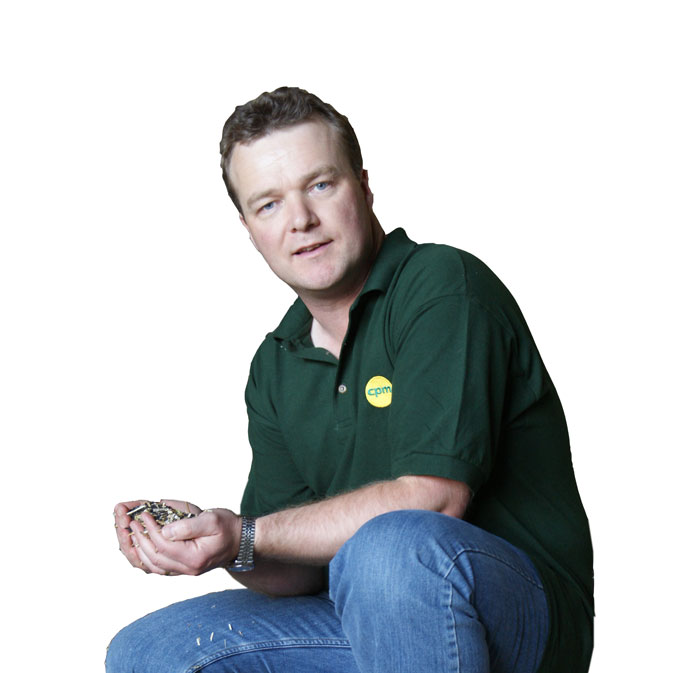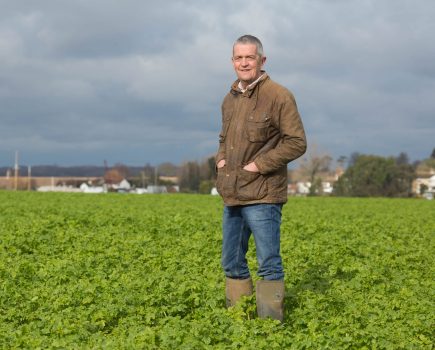If there’s one thing that haunts me, it’s that I’ll leave the land in a worse condition than I found it, and it’ll be blackgrass that’ll be the cause of my failure.
It’s bad enough that I may be inflicting this on future generations of my own family. But now the Government seems to be pledging at every turn to deliver a healthier UK Agriculture at the end of its term than the one it took on. So I now have the added guilt trip of potentially letting the whole team down as well as myself.
So it simply can’t happen. There cannot come a day when I’ll stand at the edge of a field of waving blackgrass, shrug my shoulders and say to whoever’s taking it on “Well, I tried…”, or something equally feeble.
But I’m a herbaholic – when it comes to blackgrass, I know that the decisions I make aren’t driven solely by what’s good for the land and good for the long term. There’s a darker force at work that pulls me towards the belief that all the solutions to my problems come from cans of chemicals. So I need a powerful plan.
Now I’m not the only farmer in this situation – there are thousands of us struggling with blackgrass. And while we’ve changed practice, and become less dependent on herbicides, few of us truly know whether the journey we’re now on will actually deliver us to a better place. But blackgrass isn’t the first example of this kind of problem in farming – dairy farmers have seen it with mastitis and the sheep sector has had to face up to lameness, for example. What can we learn from them?
In each case there’s been a five-point plan that addresses the problem with five different strategies, only one which is a chemical treatment. There’s been industry-wide adoption and promotion of the five-point lameness plan, for example, and recent figures show its prevalence in the national flock has reduced from 10.6% to 4.9% over ten years. Individual producers have used the plan to virtually eliminate lameness in their flock, and the plan’s proponents are confident a Farm Animal Welfare Committee target of just 2% prevalence by 2021 will be met.
So can we do the same with blackgrass? I believe we can, and it’s a view shared by grassweed guru Dr Stephen Moss, who’s introduced a new 5 for 5 initiative to beat blackgrass. You adopt five strategies for at least five years, only one of which is herbicides.
It’s a neat plan because research over the years has resulted in some quite robust figures on the levels of control you can expect from different strategies and this aims to pull them together. But it’s also flexible – every farm and every system is different, and the plan helps you pull in and tweak strands you believe will work.
It also aligns with nearly all the good work on blackgrass cultural control that’s taken place at Brampton, Stow Longa, Lamport and a host of other sites to refine best practice advice. Many in the industry, from researchers to manufacturers to distributors, have already indicated their support of 5 for 5.
So here at CPM, we’re also throwing our support squarely behind this initiative with a series of five articles. Starting with cultivations, we’ll be looking at each strategy within 5 for 5 and pulling in advice from the UK’s leading authorities to explore how to beat blackgrass and build a plan you can truly have confidence in.
I’ve also adopted the plan on my own farm and after one year, we’ve had remarkably good results. But it’s a five-year commitment and I’m not kidding myself that we’re anything like out of the woods. What’s more only two of the five strategies are working really well, and there’s one that’s yet to be implemented. So I’ve seen what can be achieved – it’s now just a question of having the grit and determination to see it through.
 Few things are more pleasurable than winning awards, and the Guild of Agricultural Journalists/Perkins Power on the Farm Award is one of the best accolades to achieve. Not only do you receive a nice cheque, but the lovely people at Perkins treat you to a day out and a scrummy lunch in London.
Few things are more pleasurable than winning awards, and the Guild of Agricultural Journalists/Perkins Power on the Farm Award is one of the best accolades to achieve. Not only do you receive a nice cheque, but the lovely people at Perkins treat you to a day out and a scrummy lunch in London.
Last year, it was an article on the Weaving GD drill that achieved third prize, and this year, ‘Cover crops are the main tools’ on the Sky Easy Drill, published in May 2016, was awarded the runner-up prize. So you can see what we’re aiming for next year…
CPM picks up more awards than most farming journals. It’s because we aim for excellence and it’s something that focuses the mind of any writer who puts together a story for us that it may result in a nice cheque and a scrummy lunch. We hope you notice the difference.




